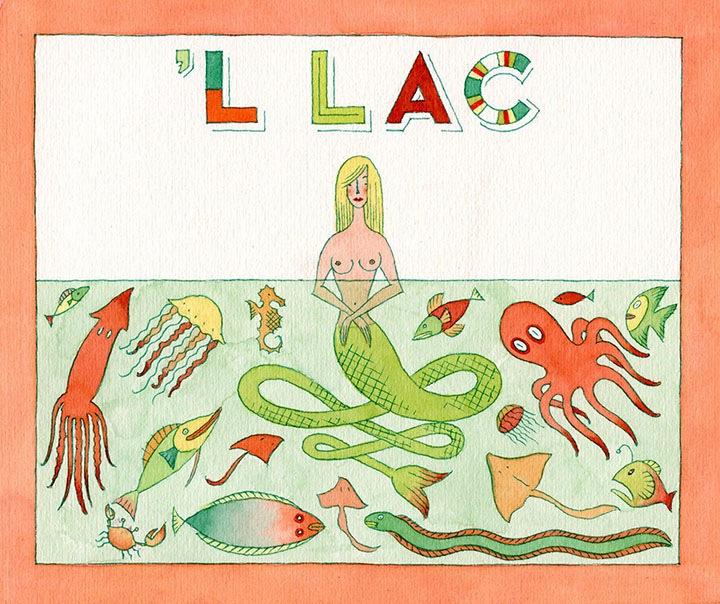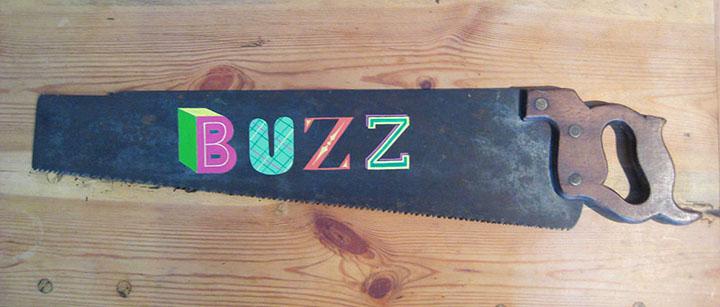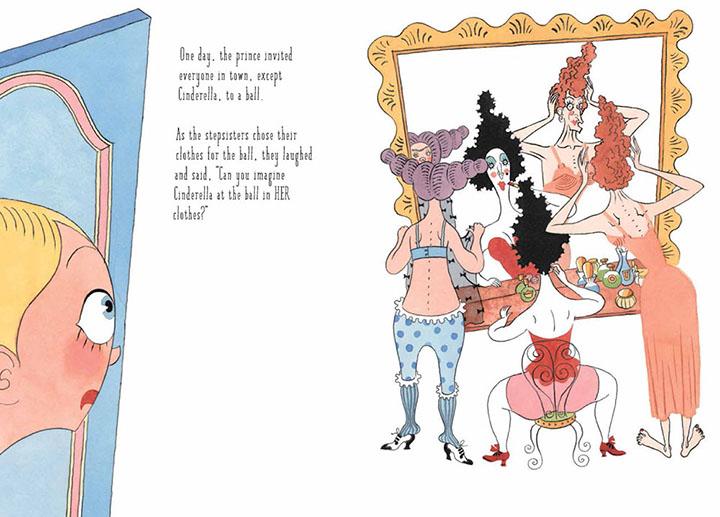The Q&A: Steven Guarnaccia
Q: Originally from Connecticut, what are some of your favorite things about living in New York?
A: I grew up in suburban Fairfield, Connecticut, always described, at the time, as a bedroom community for New York City. I never really understood what that meant, though it sounded slightly licentious. My parents were public school teachers so it was really a bedroom, living room and kitchen community for us. Growing up so close to New York, however, instilled in me an early and enduring taste for cities and especially for New York. My high school girlfriend and I would come in to the city on weekends and wander down Fifth Avenue, stopping into the museums along the way like we were window shopping.
My favorite part of living in New York is the feeling of destiny fulfilled. I knew from a young age that New York was where I wanted to be. I love the fact that’s it’s a city that’s never finished. That same dynamism means that you never are really finished with New York. There’s always the chance of a new discovery, about the culture or about oneself.
How and when did you first become interested in art and illustration?
I always drew, from a young age, and I knew that I wanted to draw for a living. I wasn’t interested in making art for a museum’s walls, but for the same things
that gave me the greatest joy as a kid: comics, kids’ books, magazines, cartoons.
What is your favorite part of the creative process?
I love coming up with ideas. In fact, if I could make a living just thinking up ideas, I’d be very happy
What is the most important item in your studio?
The most important item(s) in my studio are my books. books. I love books, live in and through them, and I can literally lose all sense of time going from book to book, browsing the shelves in my studio.
What are you listening to?
There’s a constant soundtrack playing when I work, though it’s pretty various. My current obsessions are Shara Worden and Derek Bischoff. But I’m also devoted to Prince, Van Dyke Parks, Caetano Veloso, Mina, Thelonious Monk. Mainstays are Elvis Costello and Bjork. I’m drawn to self-reinventoers. And the Bob Dylan Radio Hour is great for Dylan’s great taste in roots music and his incredibly corny sense of humor.
What are you reading?
I just finished Sweet Tooth, Ian McEwan’s latest. I’m an avid reader of his books, though this was not my favorite. I also love Muriel Spark, who feels kind of like a female Ian McEwan, writing in the 60’’s. I just picked up The Power and the Glory by Graham Greene and I already feel like I’m sweating in one of his claustrophobic colonial settings. I’m very excited about W. G. Sebald’s latest (posthumous) book. I hated reading the last line of AusterlitzAusterlitz, the last book novel he published before his untimely demise. Though he’s thankfully still alive, I feel the same way about eventually reading Philip Roth’s last novel, Nemesis. I became an adult during the course of reading his books. He and Nabokov are the twin peaks in my literary pantheon. And I have been plowing through the year 1970, in chronological order, in old Esquire magazines, to figure out what I was missing in my late teens. Amazing magazine from every perspective—Nabokov, Fitzgerald, Styron all in one issue, a luxurious format (10 x 13, though it shrank suddenly about half-way through the year—shades of things to come!), overflowing with illustrations, and the clothing in the ads is was wildly exotic.
Who and what are some of your strongest influences?
As for many illustrators, Saul Steinberg pointed the way towards what was possible with just a pen and some ink. Push Pin, and the work of Seymour Chwast especially, gave my young illustrator self a similar sense of possibility, especially in the way he and they melded ideas with spirited design, and laced it with humor. I was totally bowled over by Pop art: Oldenburg and Peter Blake are probably my favorites from the era—smart and gorgeous to look at.
I love old printed stuff, especially children’s books from the 20’s through the 50’s. At the moment, because we spend part of every summer in Berlin, I’m OD-ing on eastern European illustration and children’s books.
Did your participating in the AI32 LIVE Cover Project have any spillover into your studio practice? Do you recommend marathon art projects for inspiration or redirection?
I delved into my sketchbooks for inspiration. And of course, in the spirit of eternal return, the cover has influenced what I’m drawing in my sketchbook.
My marathon art project is drawing in my sketchbook every day for 40 years. 
Do you keep a sketchbook? What is the balance between the art you create on paper versus In the computer?
And my sketchbook is where I do all of my idea-coming-up-with. I go through a sketchbook probably every two months or so. It keeps me from drawing on tables. Everything I make begins on paper and most of it lives there, though I’ve been spending more time lately doing what I’ve always done a little of—drawing and painting on objects.
What are some of your favorite places/blogs/websites for inspiration?
The blogs I turn to for a reliable creative jolt are 50 Watts and Ape on the Moon. I recently saw the show of Czech pop-up books by Kubasta, at the Grolier Club. He wasn’t a master illustrator—in fact his illustration work is really pretty run of the mill—but he was an ingenious maker of dimensional paper objects in book form, that are beautiful, witty and surprising (and surprisingly simple). The books make his illustrations look brilliant. So I guess I took away the reminder that context and the totality of a work can be more important than the individual elements.
Have you ever had a creative block with a deadline looming? What do you do to get crackin’?
I usually draw myself out of a block—my sketchbook has saved me from many a close call.
What is or would be your karaoke song?
I actually have a karaoke song, though I haven’t sung karaoke in a while, and I only sing this one when Peter De Seve is singing it with me: “One For my Baby,” by Harold Arlen and Johnny Mercer (the Frank Sinatra version). Sung, of course to our wives, Randall and Nora.
What is your hobby?
I love the thrill of the hunt at flea markets. My quarry: vintage clothes and old books. And then, of course, wearing the clothes and reading the books.
Where do you teach—and what do you like best about teaching?
I teach at Parsons The New School for Design, where I was the director of the Illustration program for seven years. I love the
creative backwash you get from students. They are always pointing me in new directions and introducing me to new ideas and cultural phenomena.
Where did your idea for your latest book originate? What was the most difficult part about getting from idea to finished art?
My latest book is Cinderella: A Fashionable Tale, published by Abrams (above). It tells the story of Cinderella through the lens of 20th century fashion. I have written and illustrated two other books with a similar focus, The Three Bears, A Tale Moderne, and The Three Little Pigs: An Architectural Tale (both also published by Abrams). Each tells the well-known story through some aspect of design history.
I love design and design history, and I’m a fan of traditional children’s tales. The research was the most challenging (especially having to decide what to leave out!) and most satisfying part of the project.
What advice would you give to a young illustrator who is just getting noticed?
The best advice I can give is not to get too caught up in becoming successful quickly, but to look at one’s career as a long-term proposition. Better to make work that’s satisfying to your creative soul now and let success come to you.
Steven Guarnaccia is an illustrator and designer, and Associate Professor of Illustration at Parsons The New School for Design. He was the director of the Illustration Program from 2004-2011. He was the art director of the Op-Ed page of the New York Times from 2001-2004. During his 35-year career as an internationally recognized illustrator he has worked for major magazines and newspapers, including the New York Times, Abitare, Rolling Stone and Domus, has created murals for Disney Cruise Lines, and exhibition drawings for a show of Achille Castiglione’s work at the Museum of Modern Art. He is the author of books on popular culture and design, including Black and White, a book on the absence of color, published by Chronicle Books and he is the author and illustrator of numerous children’s books. Guarnaccia has designed watches and packaging for Swatch, and greeting cards for the Museum of Modern Art. He has won awards from the AIGA, the Art Directors Club, and the Bologna Book Fair, has frequently been selected for American Illustration, and has exhibited his work in one-man shows in the USA and Europe. His children’s books include The Three Little Pigs, An Architectural Tale, published by Corraini Editore in Italy and Abrams in the US, and Cinderella: A Fashionable Tale, published by Abrams in the fall of 2013. Steven organizeding the first Society of Illustrators Comics and Cartoon Art Annual, with the judging of which tookaking place next weekearlier this month. The show and publication of the annual will take place in early summer.


